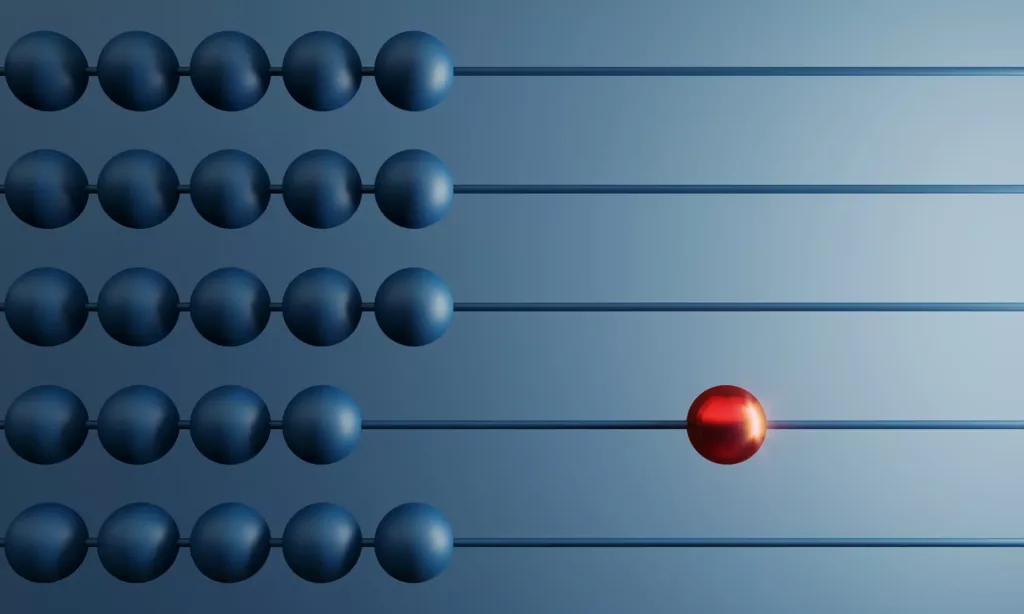In the current economic climate, cash is critical. Yet statistics suggest many businesses don’t reclaim all the VAT they’re entitled to. Nottingham chartered accountants, Clayton & Brewill provides a complete guide on how VAT for your business and how to make it work.
When it comes to VAT for your business, there’s a lot to think about. VAT registration has major implications for liquidity in any business; because it involves holding cash on behalf of HMRC, it can be both an opportunity and a risk. Here, we look at how to avoid the risks and make the opportunities – like appropriate reclaim of input tax – work for you.
We’ve focussed on two key areas: maximising cash held and minimising cash leakage.
VAT for your business: Maximising cash held
1. Review timing
With cash management, timing is everything. If you recover input tax swiftly, the business gets a short-term boost to liquidity. Similarly, you may sometimes be able to push tax points for sales – and hence output tax – into the next accounting period. This could also give you an advantage. Reviewing procedures for sales and purchase invoices for points like these may help:
- Do you have discretion over the timing of sales invoices? Making sure you still get the tax point for VAT right, you may prefer to invoice at the start of a new VAT period, rather than the end. Assuming prompt payment, this should give your business use of the cash for longer.
- Is it possible to raise a pro forma invoice or request for payment initially, rather than a VAT invoice? This may better match the time of supply, when VAT becomes due, with when you are paid.
- Are there valid VAT purchase invoices, dated within the VAT period, but not yet entered into the accounting system towards the end of the accounting period? These could be included as input tax accruals to accelerate recovery. Make sure, though, that recovery is not duplicated in the next accounting period.
It’s also important to check opportunities to reclaim input tax aren’t overlooked. For employers, key areas to watch include:
- input tax paid on uniforms or protective clothing provided for employees;
- employee expense claims;
- employee benefits.
The VAT rules on employee benefits can be a plus for your business. Where staff entertainment is provided as a reward, or to boost morale, it is a legitimate business expense for VAT purposes. Input VAT incurred can thus be recovered, for example, on events like staff parties and team building exercises. Note, however, that with entertainment for directors, partners or sole proprietors of a business, or where employees host entertainment for non-employees, the position is more complex and input tax may not be recoverable.
2. Review accounting periods
The standard VAT return period is three months. Some businesses, though, such as those with seasonal fluctuations in trade, may get a boost to cash flow by changing the VAT quarters used. Application to change quarters is made using VAT 484, the change of registration details form.
Alternatively, using a VAT scheme that changes filing frequency might help you manage cash flow. Please get in touch if you think your business would benefit from this; our team would be happy to provide further information.
– Pay and file monthly
Where a business regularly receives repayments of VAT from HMRC, it will usually be allowed to submit monthly, rather than quarterly, returns. Application here is also made using VAT 484. Monthly filing is an option normally used by businesses where sales are zero-rated, or liable for the reduced 5% rate of VAT. In these circumstances, repayments arise because input tax is more than output tax on an ongoing basis. Monthly returns are an obvious cash flow plus here. Historically, only repayment traders have been allowed to make monthly returns, but this is no longer the case and regular VAT payment businesses can now also apply. Monthly filing can help you manage cash flow by making smaller monthly payments, rather than larger quarterly ones.
– File annually: pay monthly or quarterly
The annual accounting scheme can be used where estimated VAT taxable turnover is £1.35 million or less in the next 12 months. Other eligibility criteria apply, like being up to date with VAT returns and payments. Application is made either online, via Government Gateway, or on paper using VAT600AA.
With annual accounting, there is one VAT return a year, and payment of VAT is made by instalments. There are two options: what are called monthly instalment payments – though there are in fact ten payments in all; or quarterly instalment payments.
By default, payment is monthly. Businesses registered for 12 months or more make nine instalment payments. These are calculated at 10% of the previous year’s liability. They begin at the end of month four, and are made at the end of every month thereafter. A final payment is then due within two months of month 12. This is the difference between the advance payments and the actual VAT liability, as confirmed by the VAT return.
Businesses can, however, opt to pay quarterly: for businesses which have been registered for VAT for 12 months or more, instalments are calculated as 25% of the previous year’s liability. There are three quarterly instalments, made at the end of months four, seven and ten, with a final balancing payment as above.
There is also an option to make additional voluntary payments towards the end of year liability. But in the current market, a degree of caution is needed. Basing an estimate of current VAT liability on past figures may be wide of the mark, making it important to keep the figures under review. If annual turnover increases by 10% or more, a business using the scheme has a legal obligation to tell HMRC.
3. Consider VAT cash accounting
Cash accounting is another VAT scheme that can help with cash flow – and it can be used in combination with the annual accounting scheme. With cash accounting, a business accounts for and pays VAT output tax on the basis of cash received and paid, rather than on the basis of invoices issued and received. This gives automatic relief for bad debt, since output tax is only due when payment is made.
Where output tax is usually more than input tax, the scheme boosts cash flow: the business doesn’t need to pay HMRC before being paid by its own customers. On the other hand, the business can’t recover input tax until it’s actually paid its suppliers. Note, too, that businesses paid at point of sale are less likely to benefit from the scheme.
Like the annual accounting scheme, cash accounting is open to businesses where VAT taxable turnover is £1.35 million or less. There are certain transactions for which the scheme can’t be used. These include goods bought or sold under lease or hire purchase agreements. Unlike annual accounting, there is no formal application procedure to follow. Provided your business is eligible to join, the scheme can be used from the start of the next VAT period.
4. Look at bad debts
Rules giving relief when an invoice goes unpaid are particularly relevant in the current economic downturn. Broadly speaking, VAT Bad Debt Relief comes into play when a debt is more than six months old, and you have already accounted to HMRC for the output tax. Specifically:
- the debt must have been written off in your day to day VAT accounts and transferred to a separate bad debt account
- the debt must have been unpaid for six months after the later of i) the time payment was due and payable and ii) the date of the supply.
Other conditions also apply, such as provisions around the records to be kept where a claim for relief is made. If your customer later pays, whether in full or in part, after your business has claimed relief, the VAT position should be revisited accordingly. Like for like provisions cover the position where your business fails to pay an invoice. In these circumstances, any input tax you have recovered should be repaid to HMRC.
Regular review of aged debtors is recommended, so you can claim relief at the earliest opportunity.
5. Use postponed VAT accounting for imports
Ordinarily, import VAT would be due when goods arrive in the UK. Although it might be recoverable in accordance with normal rules on recovery of input tax, the timing difference would impact cash flow.
Postponed VAT accounting (PVA) means goods can enter free circulation in the UK without a business needing to make upfront payment of import VAT. Instead, it is declared and recovered as input VAT on the same VAT return, subject to the normal rules on recovery of input tax. There is no application process: it is simply done when completing the import declaration, by selecting that you will account for import VAT on the VAT return.
If your business uses a customs intermediary to import goods on your behalf, it’s important that you make them aware that you want to use PVA, so that the import declaration can be completed correctly. It is not possible to change this on the import declaration once submitted.

VAT for your business: Minimising cash leakage
Accidental errors, such as missing opportunities to claim input tax, claiming incorrectly or applying an incorrect rate of tax on a supply, can translate into unnecessary cash outflows or unexpected liabilities. Common areas of confusion include reclaiming VAT on:
- on-street meter parking: these charges are not subject to VAT
- postage stamps: though note that the rules for delivery charges to your customers, which include stamps, can be different
- insurance transactions: these are subject to insurance premium tax, not VAT
- office sundries like tea, coffee and milk: food and drink for human consumption is usually zero-rated
- business entertainment such as provision of food and drink, accommodation, theatre or concert tickets, and entry to sporting events. Though input tax on employee entertainment may be recoverable, it’s usually blocked for business entertainment
- train, air and bus tickets: passenger transport in the UK is usually zero-rated.
Other areas to watch include:
- double-counting, where VAT is reclaimed twice on a purchase. This can happen where a business receives a payment request from a supplier, followed by a VAT invoice when payment is made. Payment requests are not valid tax invoices, and should say that they can’t be used to recover VAT
- applying the wrong rate of VAT on sales. The default is standard rating, unless a transaction is clearly reduced- or zero-rated. Watch, too, for supplies that are exempt or outside the scope of VAT, such as international services
- special care is also needed for land and property transactions, reverse charge supply chains, e-business and overseas supplies.





